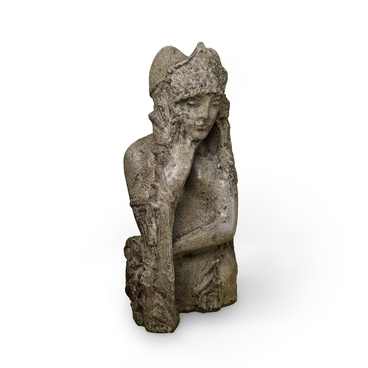In a way, the portrait captures an outcome of Nikolai Stepanovich Gumilev’s two-year sojourn in Paris, during which he attended lectures on French literature following his graduation from the Tsarskoye Selo Gymnasium. By that time, his first collections of poems, “The Path of the Conquistadors”, had already been published. While in Paris, Gumilev established the magazine “Sirius”, in which he endeavored to unite the artistic scene of “Russian Paris”. Only three issues of the magazine were published. In the second issue of “Sirius”, Anna Gorenko (later Akhmatova) made her literary debut with the poem “On his hand you may see many glittering rings…”. She also became Gumilev’s fiancée.
The last time Nikolai Gumilev visited Paris was in 1917, when he served as an aide to the commissioner of the Russian Provisional Government. The poet was not happy living in exile, and on April 10, 1918, he returned home. This decision proved to be fatal for the poet, as he was arrested on charges of participation in an anti-Soviet conspiracy known as the “Petrograd Military Organization”. He was killed on August 26, 1921. The poet’s involvement in the conspiracy was never conclusively proven. It still remains unknown where he was executed and buried.
Mstislav Farmakovsky, with whom Gumilev had met in
Paris, headed the department of critical reviews at the “Sirius” magazine. He
had interests in history, archaeology, and the decorative and applied arts.
Gumilev’s portrait by Farmakovsky demonstrates the latter’s talent as a
portraitist, capturing the poet as a sophisticated Parisian dandy. The image
represents the features of Gumilev’s appearance, as described by the artist,
Olga Lyudvigovna Della-Vos-Kardovskaya, who wrote as follows,


